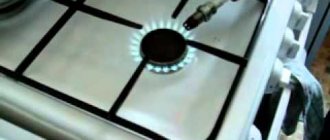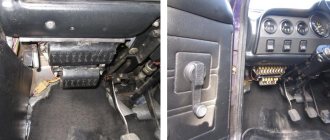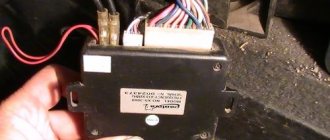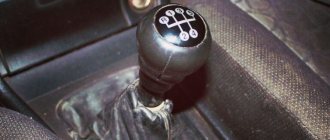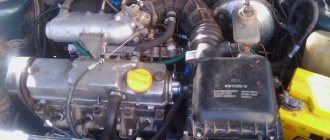A car's paintwork doesn't last forever. Unfortunately, even the highest quality layer of paint develops problems over time, begins to crack and sometimes cannot withstand the stress of washing a car. Many car owners begin to notice chips of paint appearing on the bumper after washing. The problem is that plastic is a flexible material, and most paintwork requires a rigid surface to function properly. Therefore, an unpleasant chip often forms on plastic bumpers. In the future, this chip will only grow. Its appearance indicates that it is time to repaint the bumper. Half measures are not suitable in this case for a number of reasons, which we will discuss below in the publication. It is worth noting that low-quality paint can chip already in the second month after applying the paintwork.
However, other factors also influence the integrity of the coating. For example, the professionalism of the person who did the painting. This is an important criterion for the quality of paintwork, which is often unavailable even at expensive service stations. The problem is that modern specialists do not always have sufficient experience to correctly apply all types of paint on the surface of a car. It is especially important to take these features into account when painting the bumper. Often the entire car is left unprotected simply due to the lack of quality processes when painting the car. There are many rules for working with plastic parts, and following these rules turns out to be the most important thing when performing painting work. Let's look at the causes of problems with chips on the bumper, as well as the possibilities of eliminating unpleasant consequences.
The main reasons for the appearance of chips on the bumper in a car
Plastic parts cannot be painted as well as metal body parts. When painting at a factory, there are a number of technologies that should be followed before applying the paint directly. If the paintwork was restored at private stations, problems cannot be avoided. Specialists will certainly not be able to perform all tasks exclusively the way they are done at the factory. Therefore, there are several main reasons for the appearance of chips on a plastic bumper:
- too much wear of the factory paint, the car is quite old, which causes big problems with body parts, including plastic ones;
- physical damage to the integrity of the paint due to stones, troubles during parking, minor accidents, and then the resulting chip grows at car washes and simply when driving;
- poor-quality painting is one of the main factors in paint chipping on plastic parts; the technology for applying materials to plastic is not followed;
- the chip appeared at the car wash due to the unprofessional actions of the employees, the washer pointed the gun at the bumper and then pressed the power button, the pressure knocked off a piece of paint;
- Deformations of the plastic appeared after prolonged exposure to the sun, the wavy surface caused cracking of the paintwork and the appearance of chips.
Such troubles can happen to any car. So you should use the best quality troubleshooting solutions. Many resort to the cheapest methods of repairing such unpleasant breakdowns, and often find themselves back with nothing. So you shouldn’t skimp on body repairs, otherwise you may end up with the same problems again just a few days after the important work is completed.
Removing spot chips by touching up
Such defects often appear on the front bumper from small stones. They knock off pieces of paint, causing conspicuous bare spots measuring 2-6 mm in size. There is a simple way to eliminate them, for which you will need:
- fine-grained sandpaper No. 1500 and 2000;
- degreaser and rags;
- thin stationery knife;
- primer, paint and varnish in small aerosol cans;
- thin wooden sticks with a pointed end (toothpicks will do);
- grinder and finishing polishing paste;
- glasses.
Chip repair kit
All stages of work, except polishing, can be performed outdoors at above-zero air temperatures. There is no need to remove the bumper; wash and dry it, then proceed to repair chips, following the following procedure:
- Using a utility knife, remove accumulated dirt and pieces of paint that are ready to break off from the recesses.
- Dip a toothpick in white spirit to remove dust from the chips.
- Sand a small area (up to 3 cm) around the defect with 1500 sandpaper moistened with degreaser. Then rinse the indentations again with a stick.
- Spray primer from a can onto a sheet of paper, and from there take it with a toothpick and carefully fill the inside of the chip.
- After the primer has dried, repeat the previous step, only using paint. When it dries, the chip needs to be cleaned again with sandpaper in a degreaser. The goal is to remove the coloring compound that has got on the old gloss.
- Apply the varnish with a stick. The result should be a speck that rises slightly above the surface.
- After 24 hours, sand the defect area with sandpaper No. 2000, generously moistened with water. This will remove any high spots from the hardened varnish and prepare the surface for polishing.
After wiping the area dry with a rag, polish it with a grinder with a fine abrasive paste, being careful not to cover a large area. Finally, apply polish with added wax to the bumper.
Photo instructions for repairing chips
How to professionally remove chips - video
Why shouldn't you touch up chipped paint on your bumper?
You can only touch up a chip if you know for sure that it is mechanical damage. Otherwise, such actions will not lead to a good result. The problem is that the appearance of chips is a problem with paintwork that needs to be solved efficiently and radically. If you simply touch up the problem area, you will not solve the problem in this way. But if the damage is mechanical, it is worth remembering the bumper touch-up technology:
- very small chips can be painted over with a match, a sponge or a small artistic brush; this is done quite simply, but often the quality suffers;
- if the chip is larger, you will have to use a sponge or other objects with a larger area of contact with the metal, this is an important point for every car;
- very large damages are limited with masking tape, cleaned and washed, then painting is done using a spray gun or a can;
- if there is direct damage to the bumper, they need to be eliminated; you can align the part using heat and physical influence with little force for alignment;
- If, after the damage, a hole or torn tear has formed, the repair should be entrusted to specialists, and it is best to simply buy a new bumper.
There is no point in painting over chips that appear without good reason. After some time, the paint will chip again and the result of such an action will not be the most pleasant sight. It is worth remembering that repairing body parts has its own characteristics and important features. And these features must be observed to obtain the desired result. Get important ideas for performing decent repairs on plastic body parts.
How to prepare a bumper for full painting?
The best solution to this problem will be to fully paint the bumper using high-quality materials and technologies. If the chips appeared on their own, they may just appear again, so there is no point in painting over them. It is worthwhile to completely paint the bumper using fairly simple but effective technologies. Among the important actions, it is worth highlighting the stages of plastic preparation:
- it is best to remove the bumper from the car to avoid troubles when painting it, and then take the part to the garage, where this part of the car will be painted;
- the first stages of the preparation process can be performed on the street - this is washing off the old paint, removing the layer of old paintwork completely down to the black plastic of the body base;
- the next step will be matting the plastic if it has a glossy surface, often new bumpers are not matted before painting, and they soon show chips;
- then the surface of the part is degreased with a solvent and installed directly on the place where painting will take place in a garage or other room;
- after the solvent has dried, a layer of primer is applied, which may have several balls; this process must be carried out professionally and very carefully.
If the primer is not applied, the paint will not be able to adhere to the plastic. In this case, there will be problems with the integrity of the paintwork. However, these problems can be solved quite easily by first applying a primer before painting. The quality of the primer should be quite high, since this material protects the paintwork from destruction. Therefore, this process should be treated with an understanding of its importance.
conclusions
Removing scratches and chips on the surface of the bumper yourself is not a difficult task. The vehicle owner must correctly select all the necessary materials and familiarize himself with the technology for performing the work in advance.
If you learn how to repair the front and rear bumpers on your own, in the future you will be able to save thousands of rubles on the services of specialized service centers. The choice of materials, including paint, varnish, repair marker, and so on, should be made only in time-tested stores. If you buy cheap Chinese paint, you will not achieve the desired result.
Directly painting the bumper - important conditions and features
Already when performing painting work at the priming stage, a number of difficulties arise. Streaks of material, drops and dust do not give rest to the performer of the process. If you are painting a part in a residential garage, there is no guarantee that the process will be reasonably successful. Dust will still settle on the paint. However, drips and drips can be avoided. To do this, it is necessary to fulfill the following important conditions for painting work:
- paint should be selected based on quality, and not low price; it is better to choose a good material with a high cost that will not let you down in the future;
- painting is carried out in several layers - specialists apply up to six layers of material for more reliable coating service, as well as for the absence of chips;
- it is important to ensure a completely uniform execution of the painting job; the gun must be moved smoothly over the part at a distance of about 12-15 centimeters;
- after painting, you should leave the part in the prepared room for several hours, then check the quality of the paintwork; if necessary, some places can still be washed off with a solvent;
- The last stage will be to completely dry the paint within 24 hours and install the element in the same place; this will allow you to obtain the required quality of the part without any difficulties.
With such features, the bumper will always be in perfect appearance and will remind you of the important visual features of the car. However, there are types of plastic that are incredibly difficult to paint. A material that is too thin is overly elastic and causes paint to simply not adhere to it. Often such bumpers are covered with film or other colored materials to achieve success. We invite you to watch the bumper painting process in the following video:
Using a wax pencil
Before carrying out the procedure, be sure to wash and degrease the damaged surface. This marker is best used in the garage rather than outside in moderate temperatures.
You will need to apply several coats to the scratched area. Their number depends on the depth of the scratch. Each new layer is placed 10-15 minutes after the previous one.
It is also important to follow the rules for filling in damage with a pencil. The wax is layered alternately with longitudinal and transverse movements. After complete drying, the surface of the bumper will need to be lightly polished. The car will again acquire an aesthetic appearance.
Let's sum it up
Painting plastic parts is not that easy. Local bumper repair turns out to be quite a complex process with a lot of unknowns. Therefore, in most situations it is better to trust full-fledged high-quality painting. Especially if the chips are large and did not appear from an accident. If the chip is caused by stones flying out from under the wheels of oncoming cars, you will have to do a high-quality painting of the chip itself and look at the behavior of this place. Often, owners immediately decide to repaint the entire bumper if we are talking about the unpleasant appearance of the product.
Local body repairs are always visible to the naked eye, and this really irritates many car owners. Therefore, motorists often prefer to completely repair the bumper. But keep in mind that ordering such a service from specialists can be expensive. It is also possible to repair the paint on the bumper yourself, but to do this you need to have a compressor, a paint gun and a place where you can apply the paint material. So it is not always economically profitable. Have you ever encountered unpleasant chips on your car bumper?
